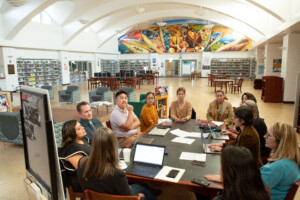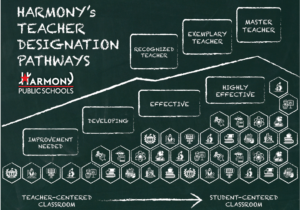Powerful, Personalized Professional Development

A recent RAND study suggests promising student learning results from early personalized learning models in K-12 education. The 32 models studied blended online and face-to-face instructional strategies to personalize learning and begin moving to a competency-based progressions. A meta analysis compiled by The Learning Accelerator suggests that these components have positive effects. (See also their new Competency-Based Professional Learning Model for educators as well.)
Sophisticated organizations have long used blended learning strategies to accelerate professional growth and provide real-time learning. The postsecondary landscape is being transformed by blended, personalized and competency-based learning opportunities. The requirement for lifelong learning in most careers is being translated into stackable credentials and professional portfolios.
Like K-12 students and other professionals, teachers deserve sophisticated personalized learning. They deserve the opportunity to learn what then need, when and how they want, and have options for showing what they know and can do.
In Preparing Teachers for Deeper Learning, we described a system such as this one that includes personalized professional learning plans, with teachers using online tools to pursue their learning at their own pace, and learning in ways which mimic and model how educators should teach their students. We called for project-based learning for educators, competency-based learning at pace, online, blended and personalized learning options that allow educators to learn specific content and skills that will help them improve their ability to teach, reach and engage all students. We outlined what professional learning could look like if there was implementation of micro-credentialing, where teachers earn badges for specific skills that translate into effective teaching in the classroom.
In Preparing Leaders for Deeper Learning, we described a similar system for leaders — informed by dozens of education leaders who described required roles for building and sustaining nextgen learning environments.
Our work over the past several years has pointed us to examples of programs that are making a difference in their communities and for the corners of their (face-to-face or virtual) world. However, to move from a vision for transformative professional development to reality hinges upon the ability to deliver high quality PD at scale.
An approach like the one described by Alvin Crawford in 5 Steps to Transformative Professional Development delineates a path forward:
1. Follow the research
Crawford writes: “To be transformative, strategic professional development needs to be intense, continuous and sustained to have a lasting impact. The Center for Public Education’s Teaching the Teachers reports that effective PD takes 50 hours or more on a given topic.”
2. Go online
Online PD offers scaling opportunities, reaching thousands of educators instead of dozens at a time. Online learning also offers customized and personalized options.
3. Incorporate face to face learning
Crawford writes, “Face-to-face common planning time and online support communities are both essential – a true blended approach. To learn a skill it’s also been proven that coaching, modeling, observation, feedback and time for teachers to reflect on what they’ve learned, is essential.”
4. Allow for self-pacing and collaboration
Educators can collaborate online and/or in person, and they can pace their own learning, moving at their speed. Let’s model what we also believe should be true in deeper learning environments for students.
5. Act now
Preparing new professional development models needs to start right away. It is possible to transform PD and to scale this. We can turn the vision of transformative professional development into a reality.
This post is a part of a blog series in the upcoming “Getting Smart on Transformative Professional Development” Smart Bundle produced in partnership with Knowledge Delivery Systems (@KDSI). Join the conversation on Twitter using #TransformPD. For more, check out:








0 Comments
Leave a Comment
Your email address will not be published. All fields are required.